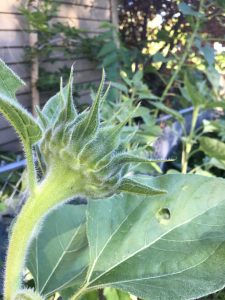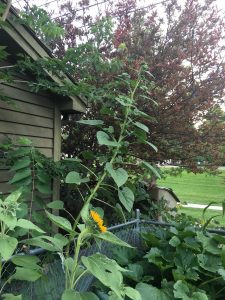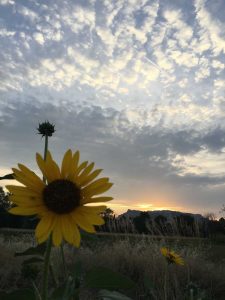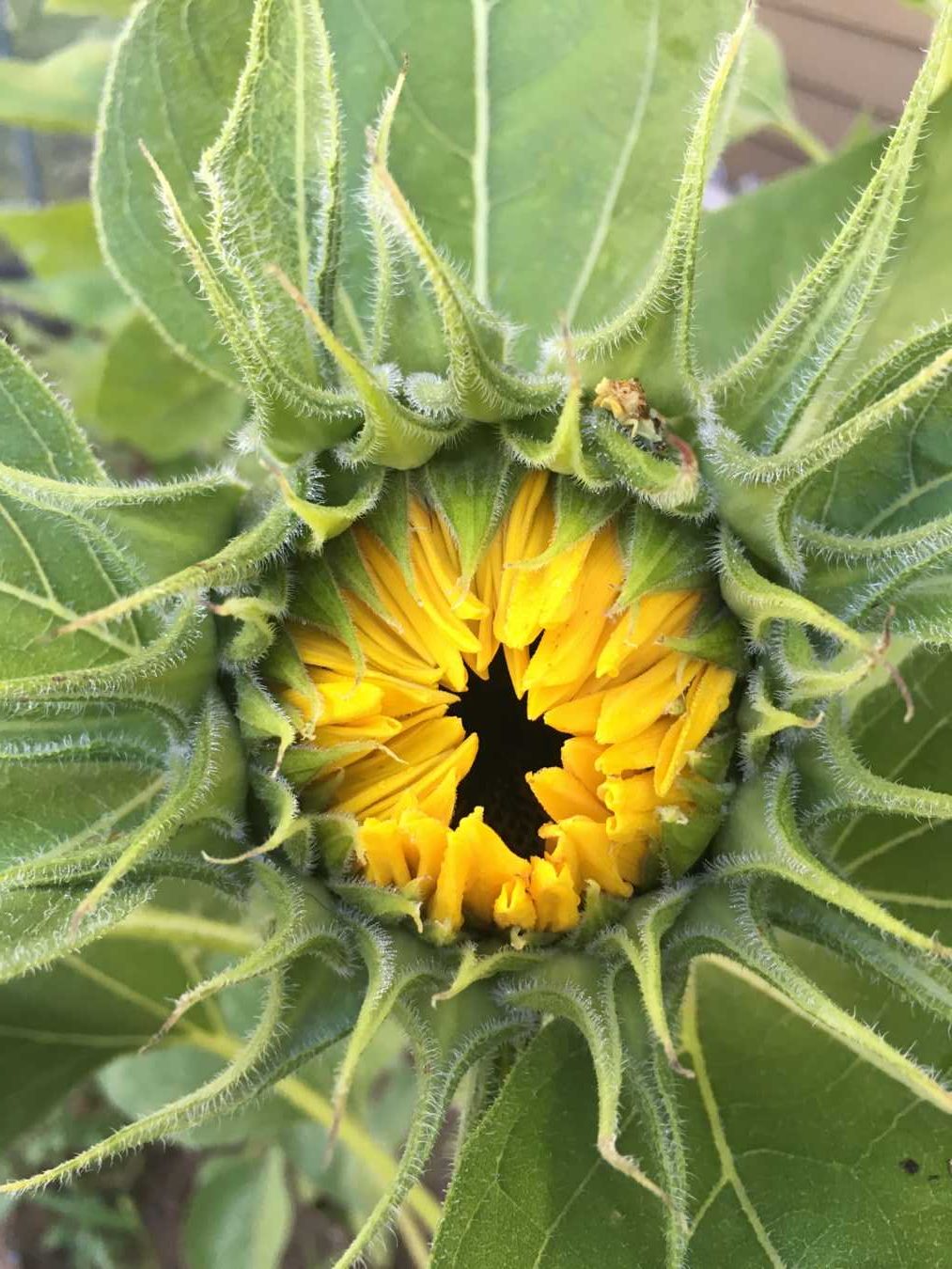For the past several years, I’ve dabbled in gardening. I have grown (pun intended) in my understanding of soil preparation, crop rotation, seed saving, and I’ve even begun to find myself tasting some of the weeds that grow in my garden space. (Purslane is a delicious succulent that you probably have in your yard…and the cracks in your sidewalk, too.) Some years the gardening goes tremendously well. Other years, not so much. But, I’d like to think that I’m getting a little bit better every year at selecting plants that will grow well in the place where I live, and in troubleshooting problems as they arise (which they invariably do).
I’ve also learned that being out of town for two weeks in July or August means conceding the weed-pulling battle to the weeds. From then on, it’s like crisis management.
But, my favorite thing about gardening is trying new things. This year I grew garlic for the first time, and I’m already excited to try out okra next year.
I love watching plants grow for the first time, like the way asparagus pushes straight up out of the ground or garlic grows up through the snow. Every plant is different, and sometimes I even find myself learning things about life from the way plants grow.
This year, I planted some sunflowers in my garden. They are mostly for the bees to enjoy, as they aren’t the kind that produce large seeds for eating. But, as my row of sunflowers has grown, I’ve noticed a few things about these peculiar and beautiful plants that has challenged me in my own life journey.
Sunflowers Are Going to Bloom No Matter What
Once my sunflowers reached a height of about 3 feet tall, a wind storm swept through and snapped the tops off of a few of them. A few days later, more plants had been broken off. I only had a few that were left intact. I was disappointed. I had been looking forward to the beautiful sunflowers, and all the pollinators those sunflowers would attract to my garden.
But, then something amazing happened: the plants that had broken began forming buds anyway.
Some of them formed one flower bud, but many of them formed three or more buds in the place where the taller part of the stalk had broken off.

For these sunflowers, their struggle against the elements would not keep them from blooming. They may break, they may bend, they may even get knocked down (which required us to quickly stake them back up until they could heal), but they were going to bloom. Sometimes even more brilliantly than if they had not been forced to weather those storms.
As I’ve watched the sunflowers in my garden grow, I have been asking myself if I have the courage to bloom anyway. And, I’ve wondered if those places where I feel broken or incomplete might actually be opportunities for me to bloom more vibrantly than I could have otherwise.
Sunflowers Stay Focused
The sunflowers in my garden are always on the move. Even before the brilliant yellow flowers were revealed, the sunflowers twisted and turned themselves throughout the day to face the sun. They were focused. They moved to keep their focal point in front of them. And that focus has been teaching me about life and the way I am living mine.

As a Christian, I believe I need to keep my eyes on Jesus and I need to keep my ears open so that I can hear the way he calls me to live and move in my daily life. For those of you who may not consider yourselves religious, you may not find a religious higher power to be your focal point, but I still think the sunflowers offer an important reminder that whether we realize it or not, we are always twisting or turning to keep our focus on something, even if that focus is not helpful or life-giving.
The sunflowers are teaching me to be intentional about what I focus on. And they are encouraging me to remain flexible. Sometimes I will think I’m focused on what I am intending to be, only to discover that I’m facing the wrong way and need to re-orient myself. While I don’t know the science behind it for sure (any botanists or horticulturalists out there to help me out?), I suspect that the ability to move the way sunflowers do strengthens their stalk. Something about their flexibility highlights their strength.
Sunflowers Are All Different
A funny thing happened in my garden shortly after I planted my sunflowers: another variety of sunflower got planted right next to them, but in between the chain link fence and the wire fence around my garden. I did not plant the sunflower between the fences. It’s not the same variety – at all! – as the ones I planted. And yet, there it is.
This wild sunflower is almost twice as tall as the four-foot sunflowers in my garden. And it has at least 10 flower buds on it. I have no idea where it came from, but it has served as a visual reminder to me that sunflowers will bloom no matter what obstacles they face, but also that all sunflowers are different.

Each of us has different strengths, and my sunflowers are showing me the beauty of living into those strengths. The tall, multi-flowered sunflower is weathering continued adversity and pressure but still reaches for the skies like it was meant to do. The smaller sunflowers seem to be a haven for small pollinators, and they are open and hospitable to those beneficial insects that I’m giving a lot of credit to for the success of my garden plants this year.
Wouldn’t it be ridiculous if I looked at the volunteer sunflower in my garden and decided it wasn’t a sunflower because it wasn’t four feet tall, and the leaves were broader? Why do I do that to myself, or to others? We’ve all got different strengths and talents. They are to be celebrated.

William Wordsworth once said, “Come forth into the light of things, let nature be your teacher.” And Jesus reminded us to consider the lilies of the fields. While we cannot learn everything there is to know from the created world around us, I’ve found that there are plenty of lessons right in front of me if I would just take the time to look.
Sunflowers have showed me the importance of perseverance, focus, and uniqueness. They have also shown me how much I could stand to grow in these things myself.


